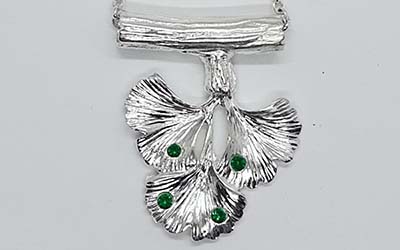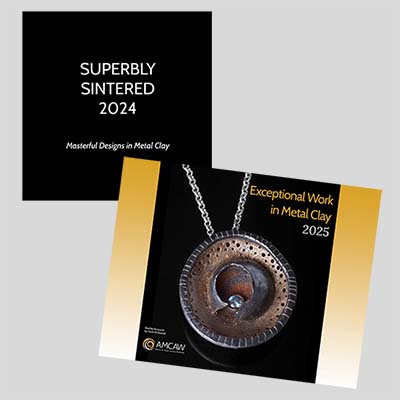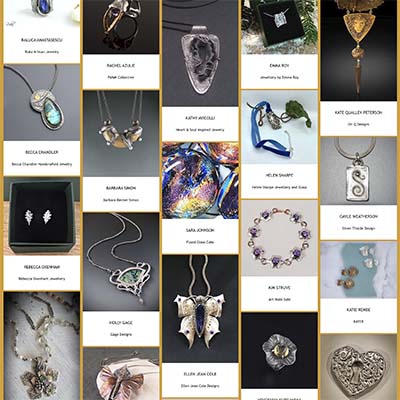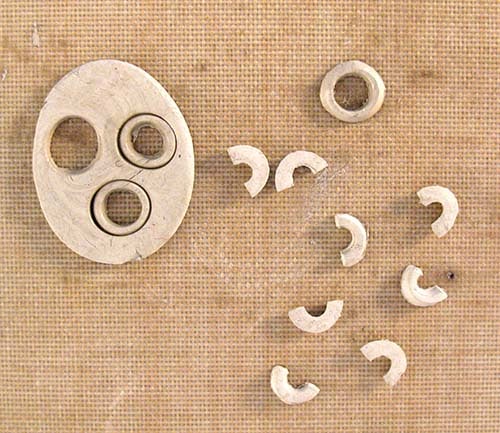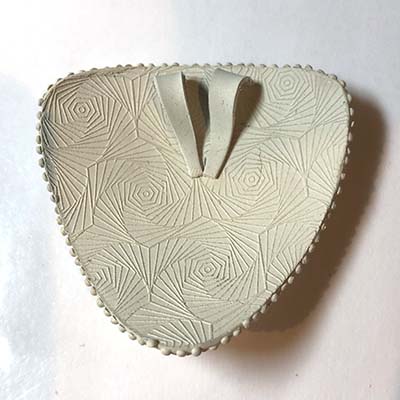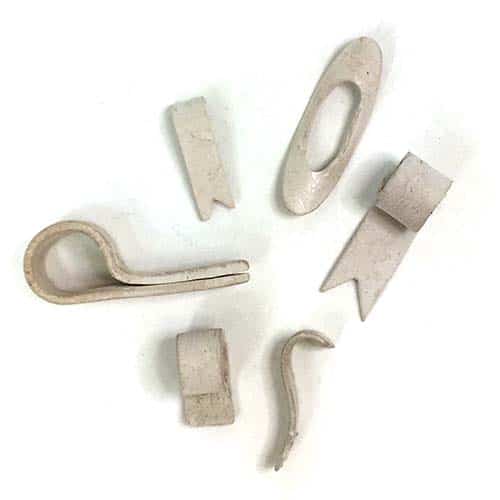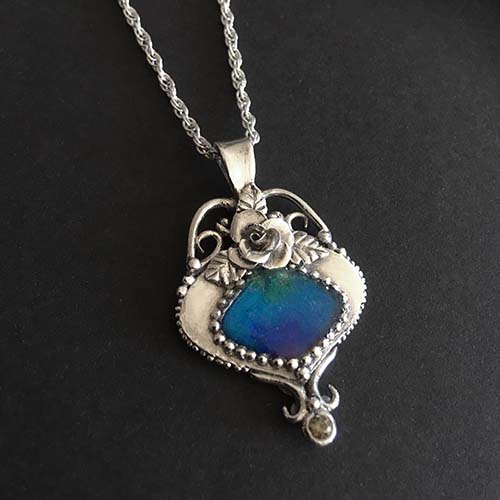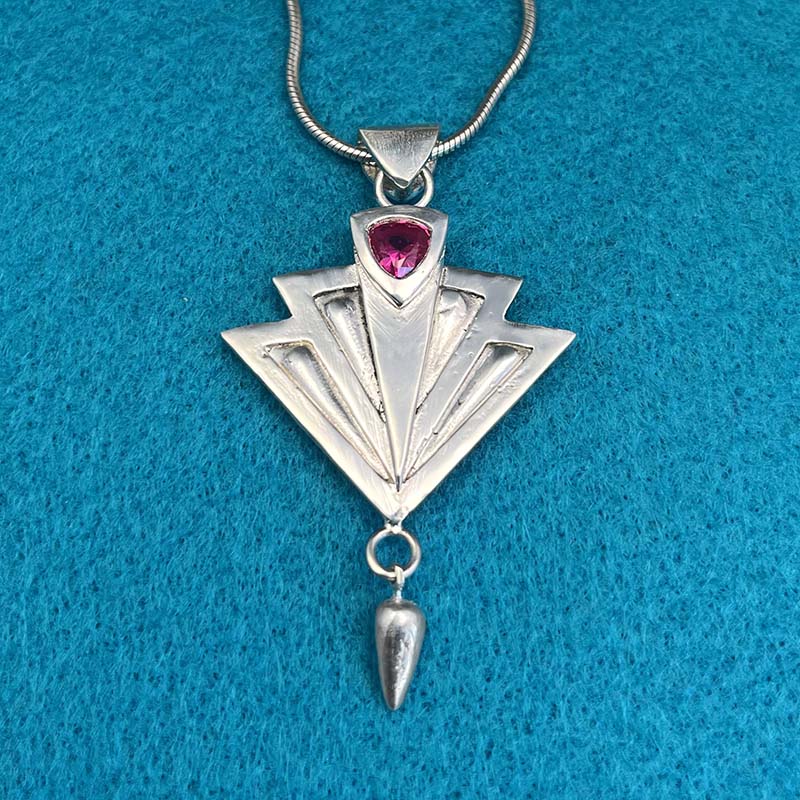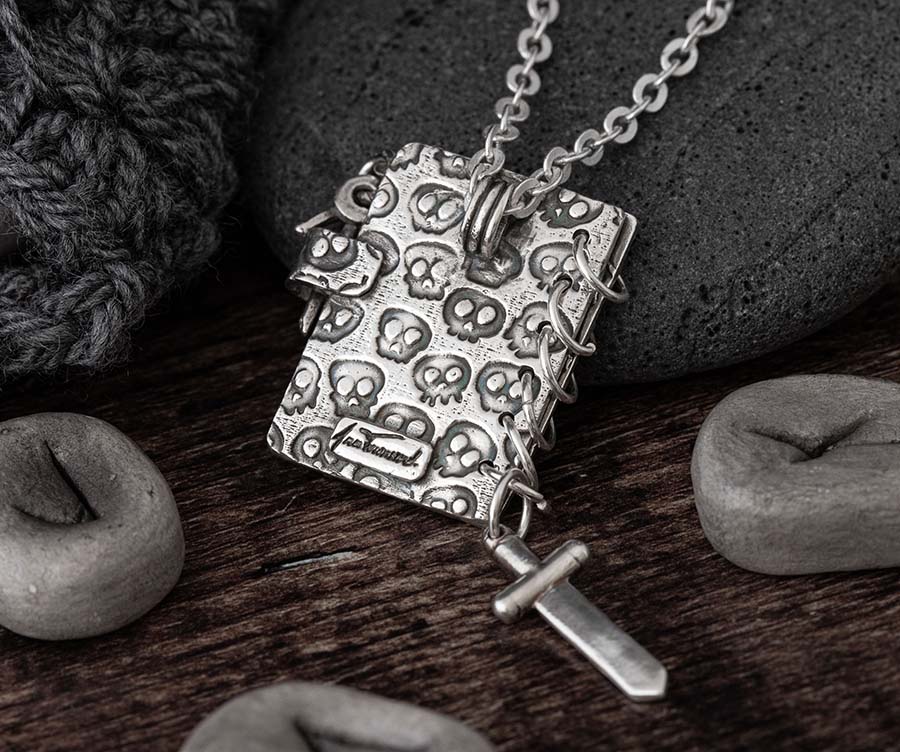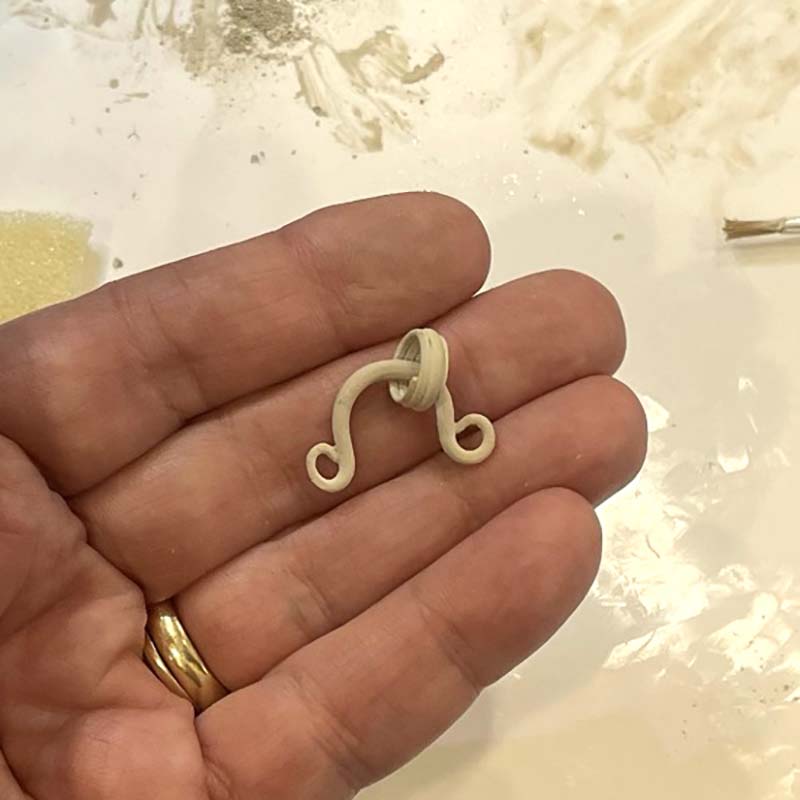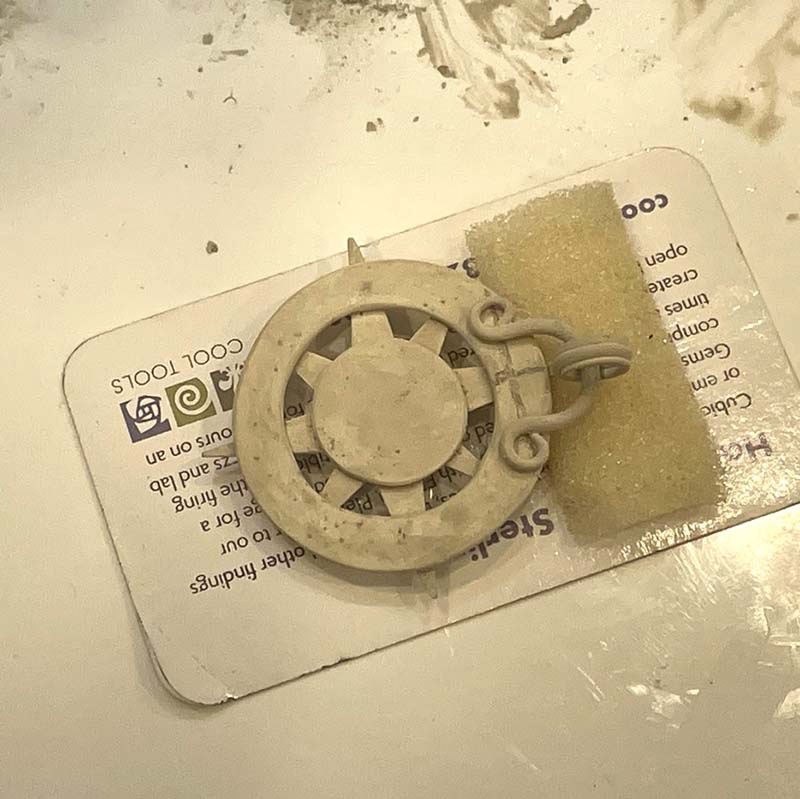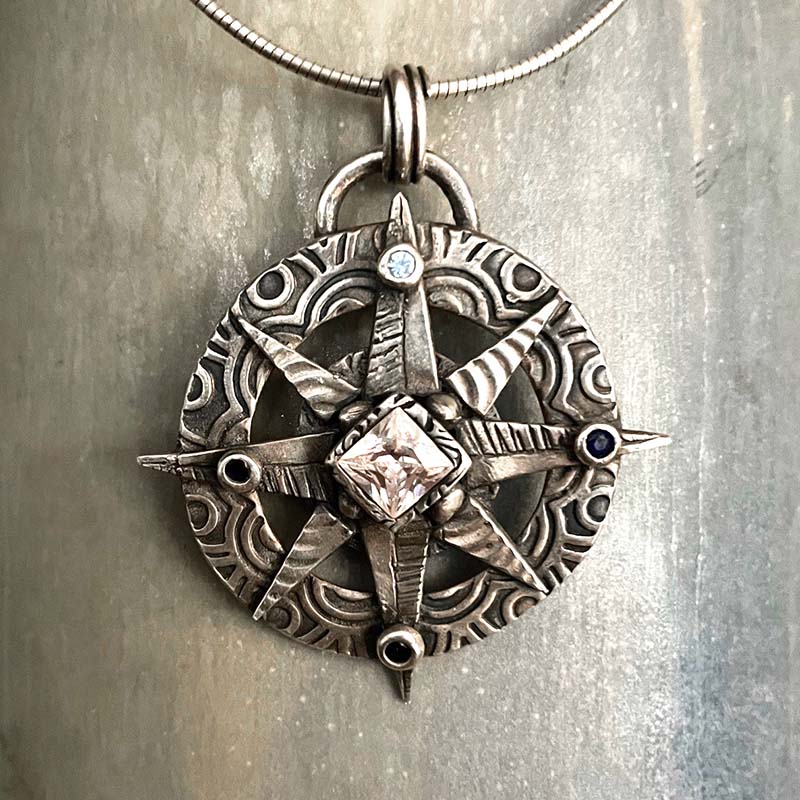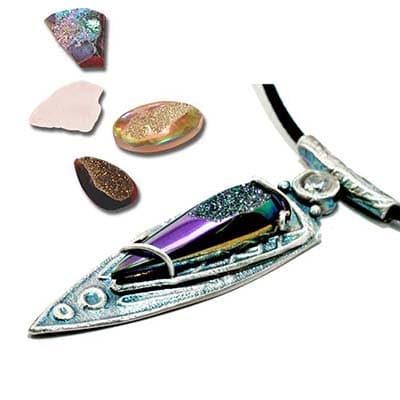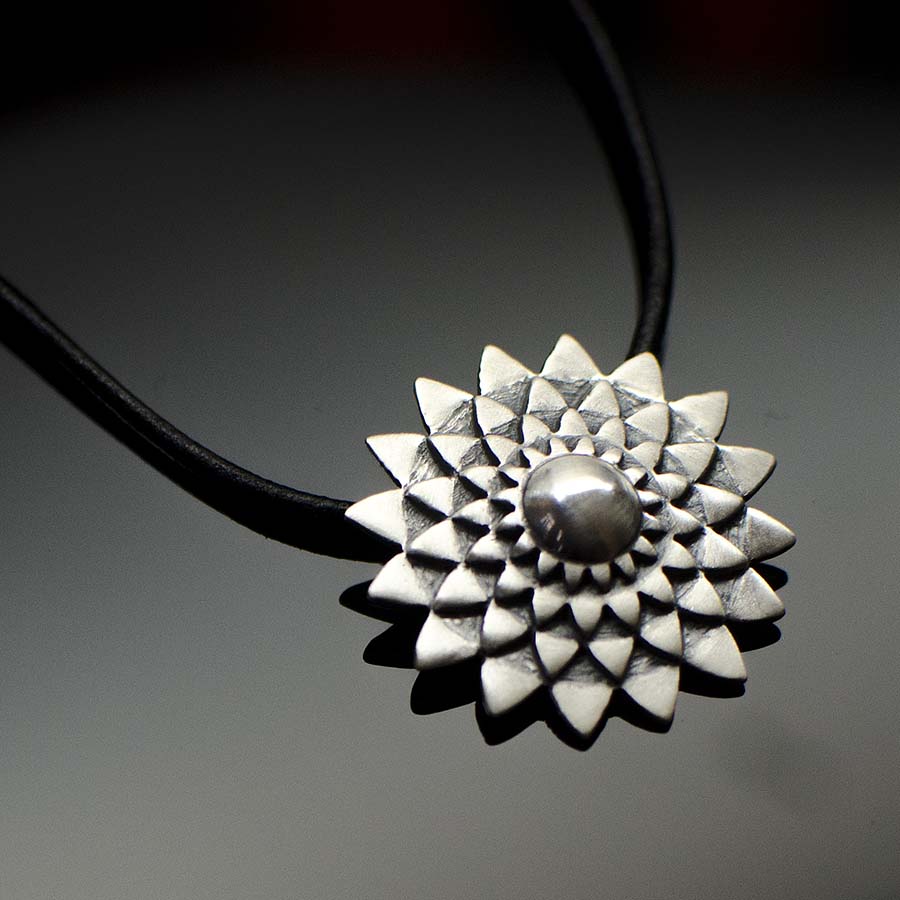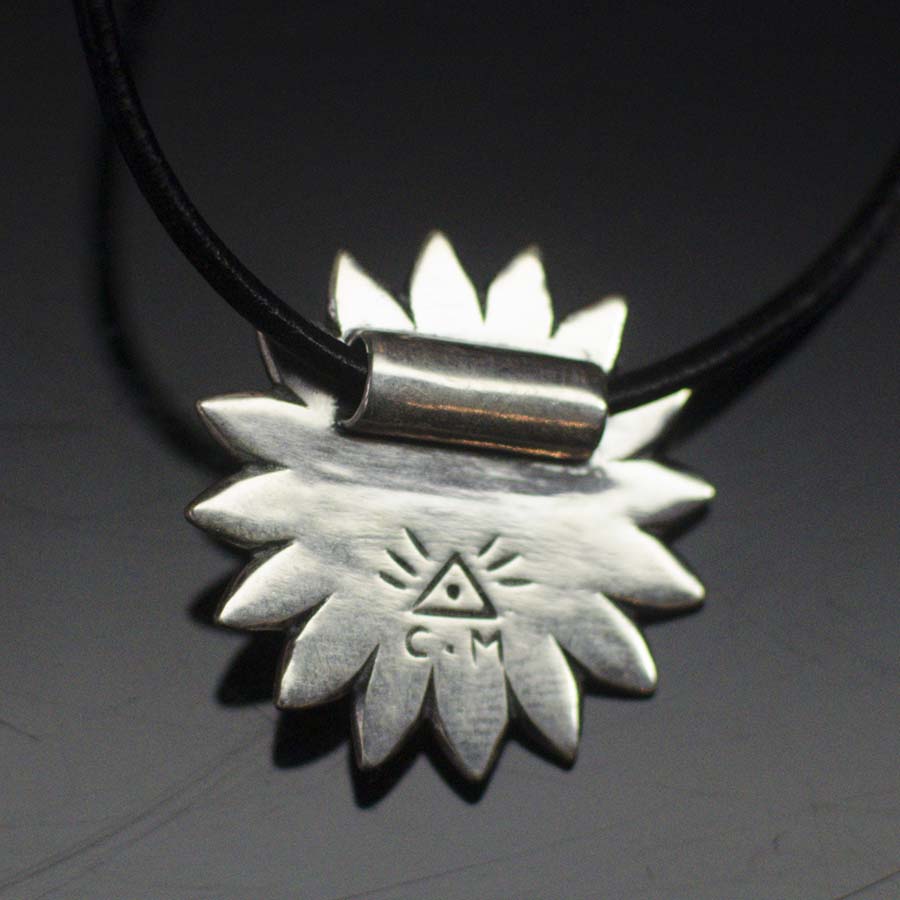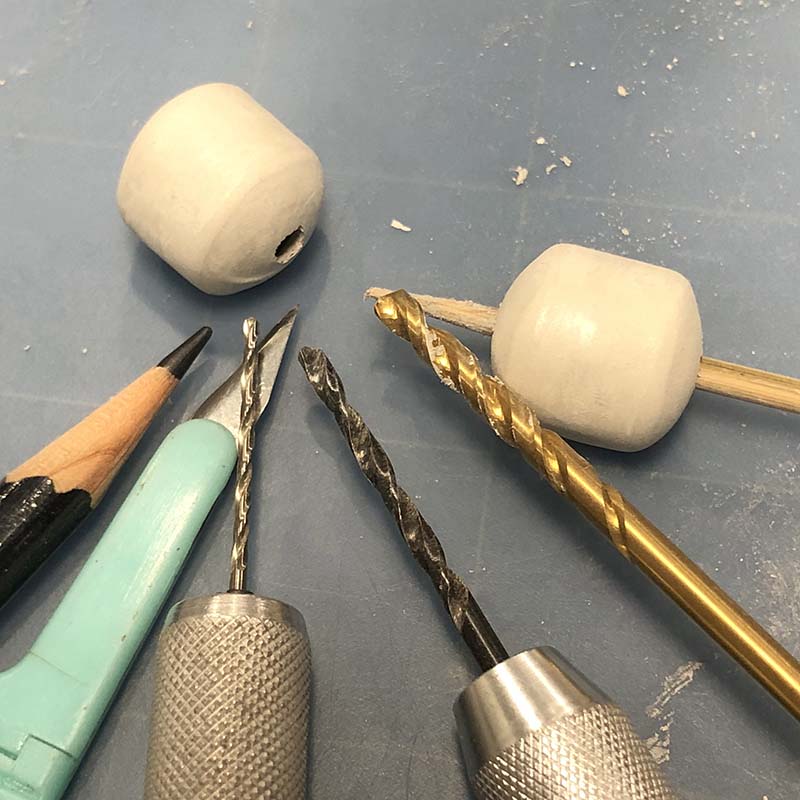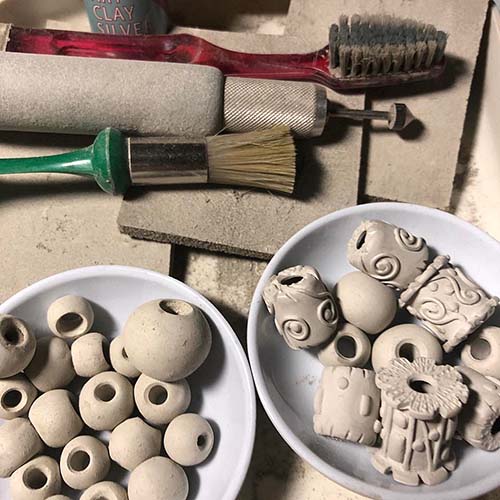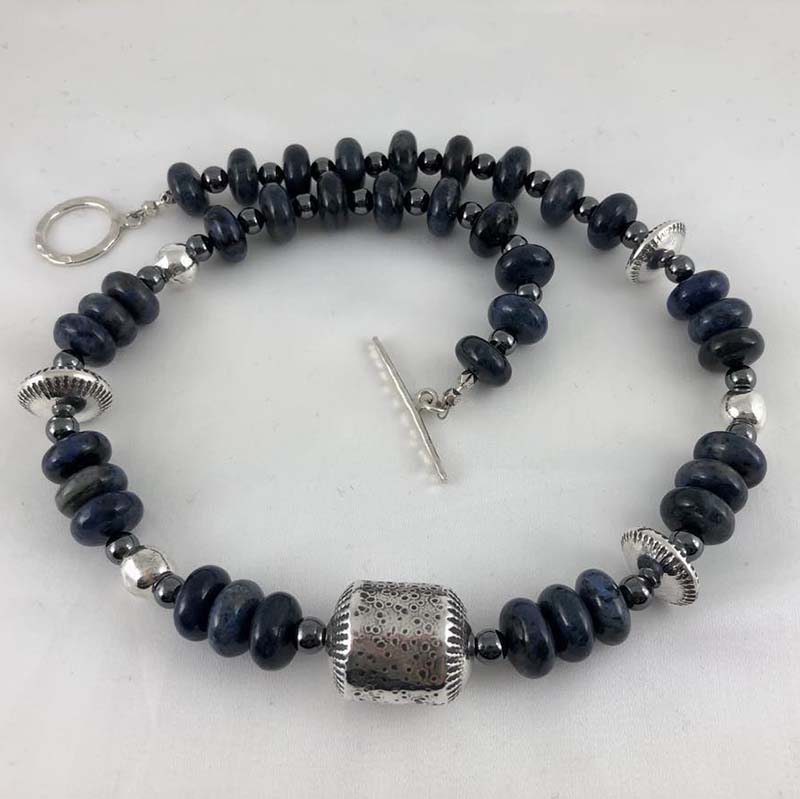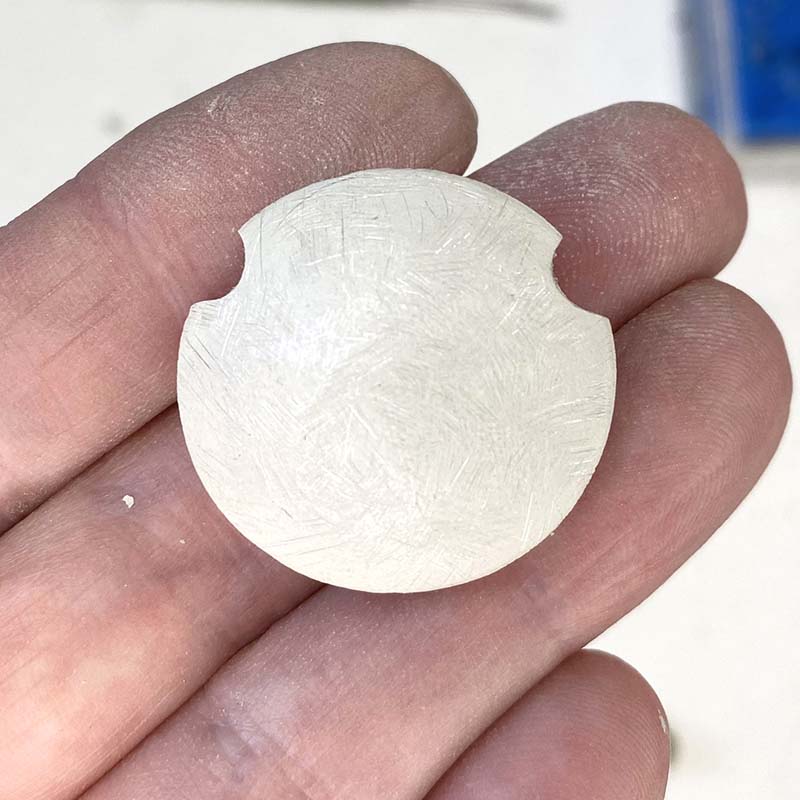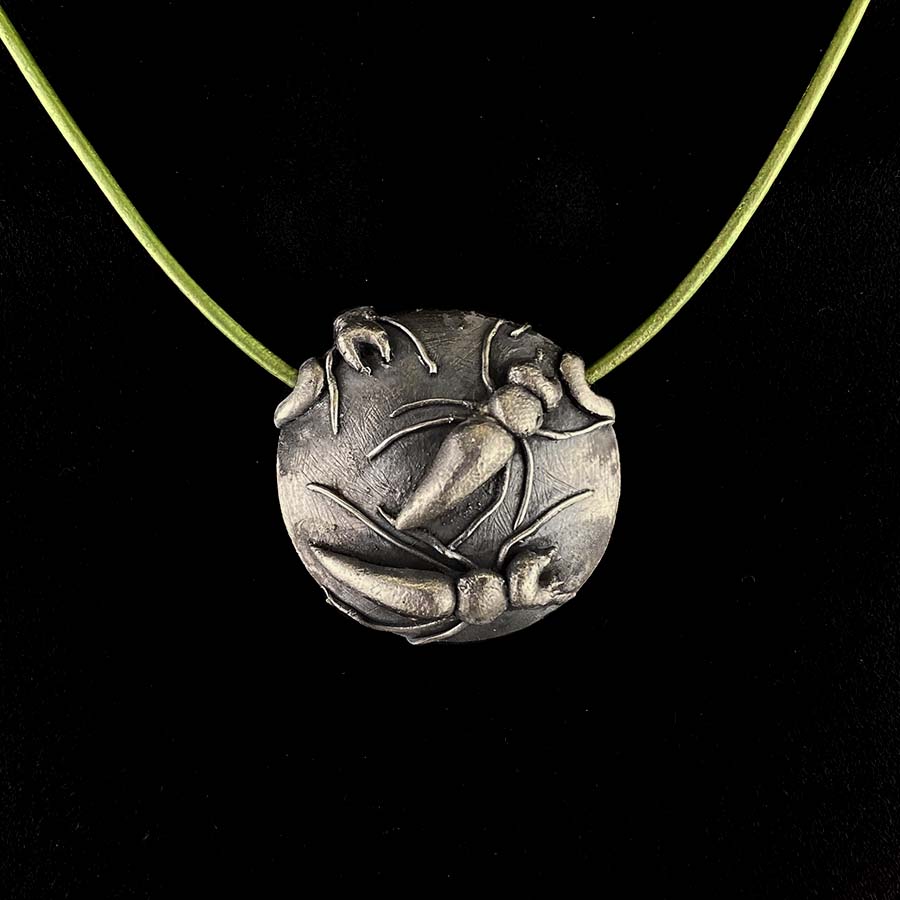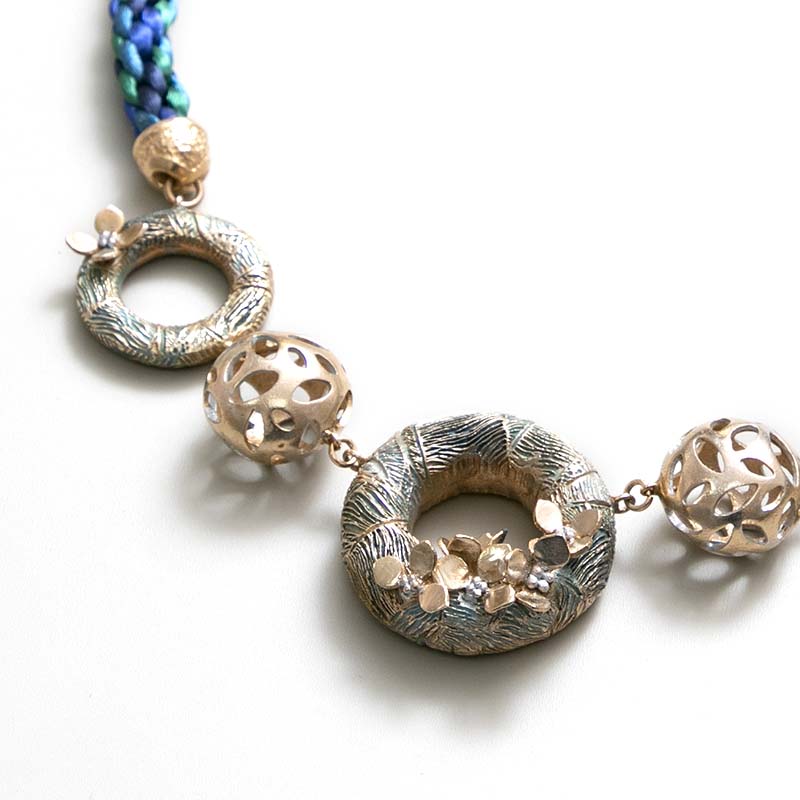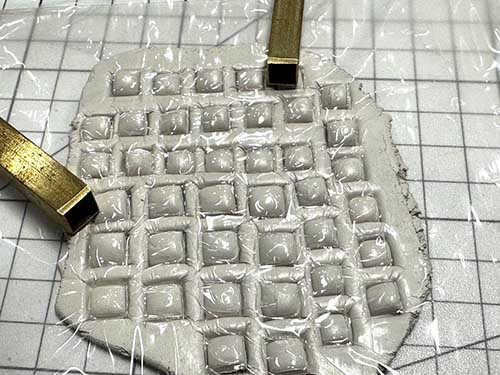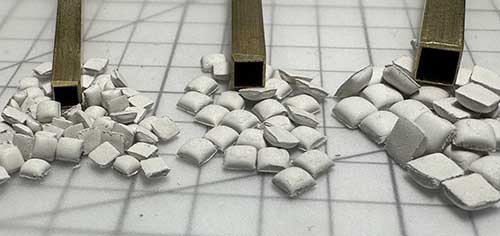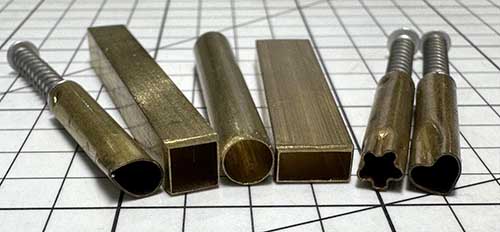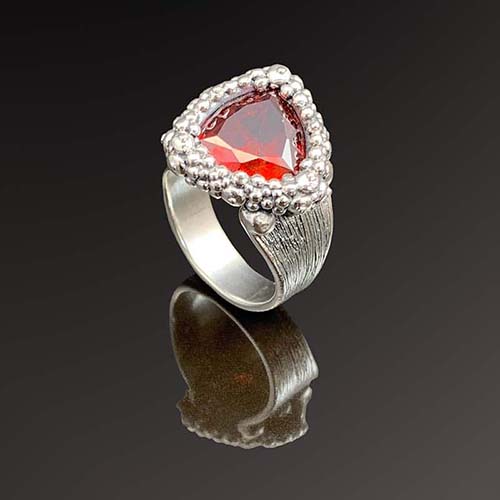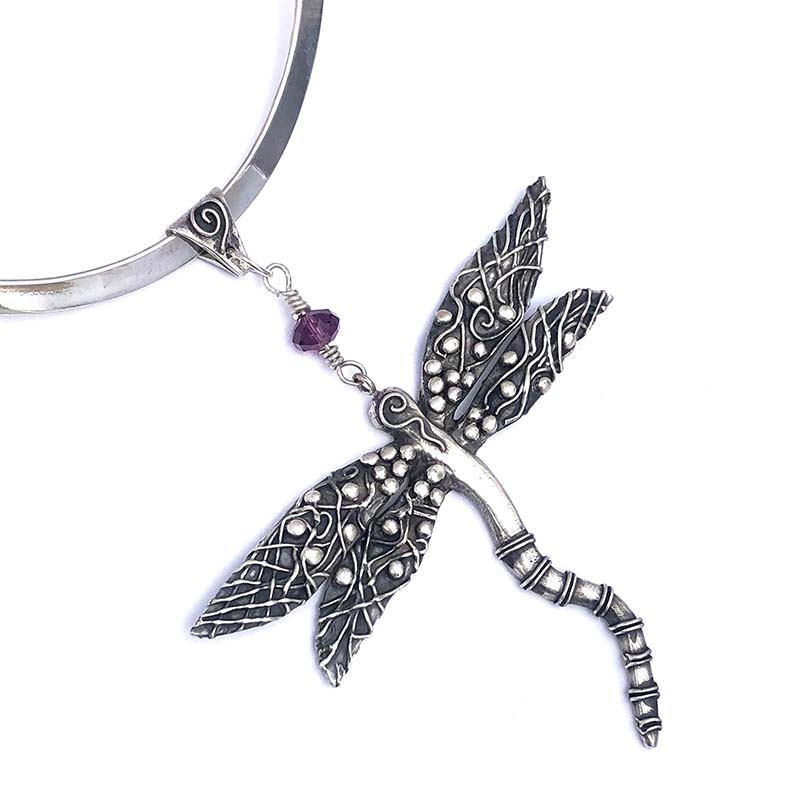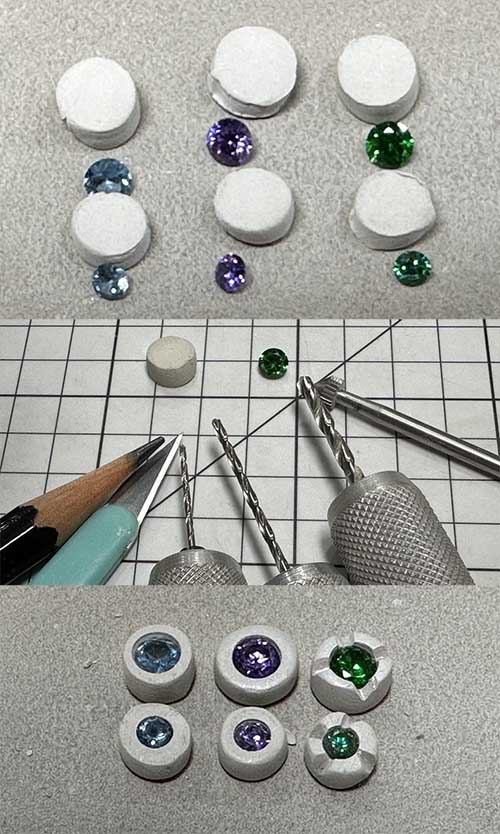Stone Setting In Advance
Pre-creating routinely used stone settings can be a massive time-saver.
The image shows round faceted stones in the process of being flush set or gypsy set using stone-setting burs.
The stone is often set in metal clay by creating a pavilion-shaped hole with a cylinder above it. The pavilion of a stone is the part that runs from widest part of the stone, the girdle, down to the point, called the cullet, which forms a V or cone shape.
The diameter and depth of the cylinder above this matches the diameter and depth of the stone’s girdle and crown and is the element that grabs the stone during firing shrinkage to hold it in place.
It is important to note that same-sized faceted round stones, even those of the same color, can have variations in the depth of both the girdle and the pavilion.
However, by creating generic flush settings for same-diameter stones, where the pavilion and girdle sections are slightly deeper than required for many stones, you can have stone settings on hand that can be modified to match the needs of many stones.
As shown in this image, settings can be stored rough (top), then cleaned up to suit the specific stone, or even carved to create a more decorative setting (bottom).
Note that these bur-created settings can also be used for flat-backed fire-safe round cabochons of the same diameter.


